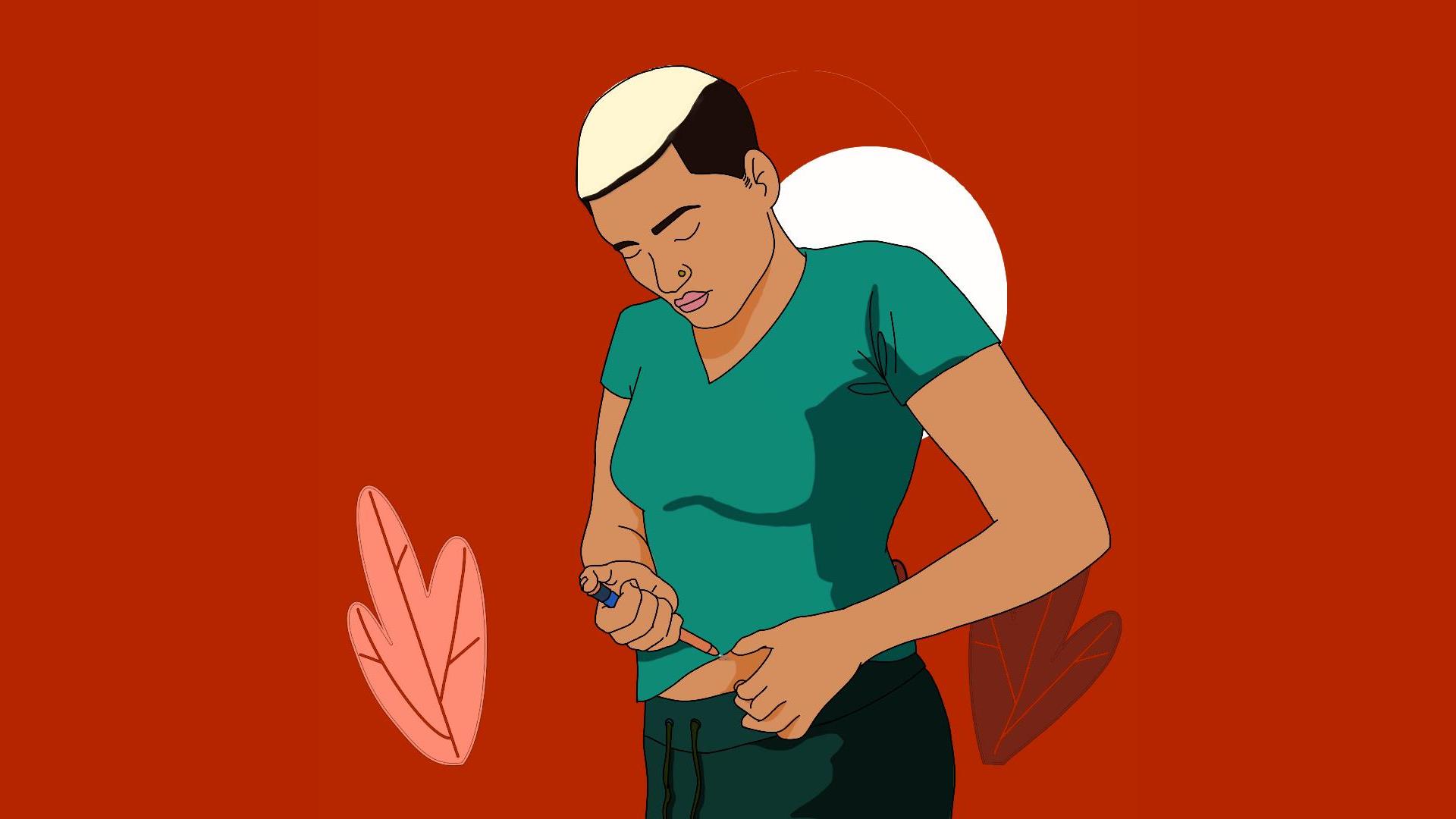🎧 Listen to: Type 1 Diabetes

Type 1 Diabetes
Understanding type 1 diabetes?
Imagine your body as a car. To move, it needs fuel. The food we eat is broken down into a type of fuel called glucose (sugar). But the body needs a special key insulin to unlock the cells and let the glucose in. People with type 1 diabetes do not have this key because their body stops making insulin. This leads to too much sugar in the blood, which can cause serious health problems.
How common is type 1 diabetes in Africa?
- Type 1 diabetes is less common than type 2 diabetes, but it is still a growing concern in Africa.
- In 2021, around 300,000 children and adolescents under 20 years old were living with type 1 diabetes worldwide, and many were in Africa.
- In countries like Ghana, Nigeria, and Kenya, more young people are being diagnosed with type 1 diabetes, but many go undiagnosed due to lack of awareness.
- Many cases are mistaken for other illnesses, leading to late treatment and serious complications.
Signs and symptoms of type 1 diabetes?
Many people ignore the early signs of diabetes because they seem like common issues. If you or a loved one experiences these symptoms, get checked:
- Extreme thirst: Feeling thirsty all the time, even after drinking water.
- Frequent urination: Passing urine more often, especially at night.
- Unexplained weight loss: Losing weight despite eating well.
- Constant hunger: Feeling hungry even after eating.
- Fatigue (tiredness): Always feeling weak and lacking energy.
- Blurred vision: Difficulty seeing clearly.
- Mood changes: Feeling irritable or having sudden mood swings.
- Bed-wetting in children: A child who had stopped wetting the bed suddenly starts again.
What causes type 1 diabetes?
Scientists are still researching the exact cause, but some factors that may increase the risk include:
- Genetics: If a parent or sibling has type 1 diabetes, there is a higher chance of developing it.
- Infections and viruses: Some infections may trigger the body’s immune system to attack insulin-producing cells.
- Environmental factors: Some studies suggest that children from urban areas are at higher risk than those in rural areas.
Diagnosing type 1 diabetes?
Doctors diagnose type 1 diabetes using the following tests:
- Fasting blood sugar test: If the blood sugar level is higher than 7.0 mmol/L on two separate occasions, it may indicate diabetes.
- Random blood sugar test: A reading above 11.1 mmol/L along with symptoms suggests diabetes.
- HbA1c test: Measures blood sugar levels over the past three months; a result above 6.5% suggests diabetes.
Complications of type 1 diabetes?
If not managed properly, type 1 diabetes can lead to:
- Diabetic ketoacidosis (DKA): A life-threatening condition caused by a lack of insulin, leading to high blood sugar and acid buildup in the body. Symptoms include:
- Deep, rapid breathing
- Dry skin and mouth
- Fruity-smelling breath
- Nausea or vomiting
- Confusion or unconsciousness
- Low blood sugar (hypoglycemia): This happens when blood sugar drops too low, usually due to skipping meals, too much insulin, or excessive exercise. Symptoms include shaking, sweating, dizziness, and confusion.
- Long-term complications: If diabetes is not well managed, it can lead to:
- Heart disease
- Eye problems (which can lead to blindness)
- Nerve damage (causing numbness in hands and feet)
- Kidney failure
- Foot infections that may require amputation
Managing type 1 diabetes?
Although type 1 diabetes has no cure, it can be managed effectively with the right approach:
- Insulin therapy: People with type 1 diabetes need insulin injections daily because their bodies do not produce insulin.
- Healthy eating: Eating a balanced diet with more vegetables, whole grains, and lean protein helps maintain stable blood sugar levels.
- Regular exercise: Physical activity helps the body use insulin better, but it should be balanced with proper meal planning.
- Regular medical checkups: People with diabetes should see their doctor regularly to monitor their condition and adjust their treatment if necessary.
Myths about type 1 diabetes in Africa?
- “Diabetes only affects rich people.” o False! Diabetes affects both rich and poor, rural and urban people alike.
- “Diabetes is caused by eating too much sugar.” o False! Type 1 diabetes is an autoimmune disease, not caused by diet.
- “Herbal medicine can cure diabetes.” o False! No herbal medicine has been scientifically proven to cure diabetes. Always follow medical advice.
Why health education matters?
Many people in Africa live with diabetes without knowing it, leading to serious complications or even death. By spreading awareness, we can help people:
- Get diagnosed early
- Manage their condition properly
- Live long and healthy lives
If you or someone you know has symptoms of diabetes, visit a hospital or clinic for testing.
